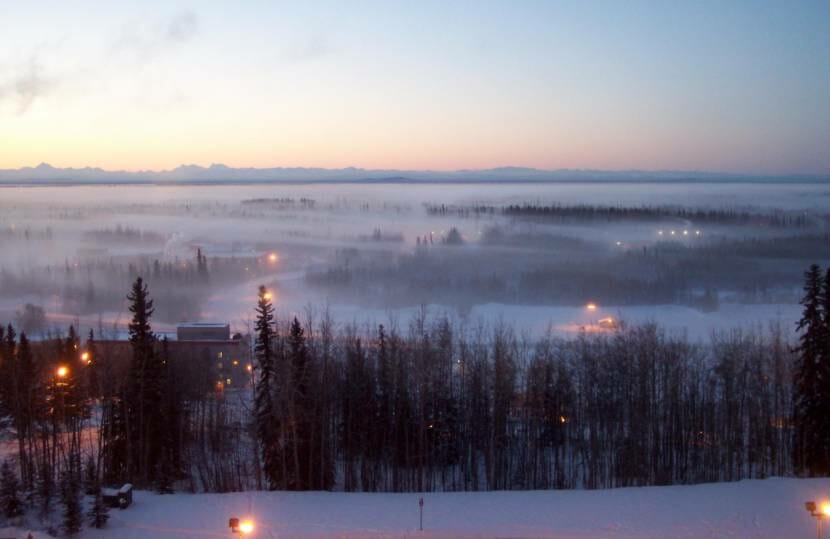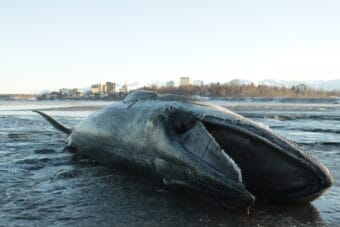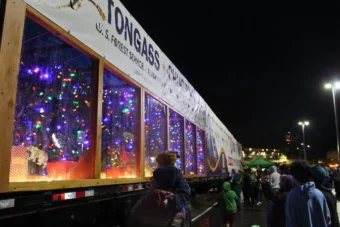
The Fairbanks-North Pole area air pollution problem is slowly getting better, according to a state report released last week. The report covers a year that had more days of stagnant air, more no-burn days and a lot of people staying at home.
But the report shows the Fairbanks North Star Borough still exceeds the national ambient air quality standard of 35 micrograms/cubic meter.
Alaska Department of Environmental Conservation program manager Cindy Heil says there is reason for optimism about the progress the area is making toward the Clean Air Act standard.
“Absolutely, we have a lot of work to do. But we look at it the way the standard was built, which is a three-year design, and the three-year design value in Fairbanks did go down,” she said.
Although a monitor on Hurst Road in North Pole measured more PM 2.5 particulate pollution this year, Heil says the overall trend is toward cleaner air.
“The standard is 35 and we are at 63. That’s, you know, twice the amount. So, it is high. But if you look at the design value from 2014, it used to be 139.”
Heil says a three-year average smooths out year-to-year weather variability.
Another monitor, on A Street in the Hamilton Acres neighborhood on the east side of Fairbanks, also showed more pollution in 2020 than the previous year.
Nick Czarnecki, the Fairbanks North Star Borough’s air quality manager says he doesn’t have enough data to know why more particulate matter was recorded there.
“2020 was like no other year,” he said. “With the pandemic, we really don’t have any idea what change that had on people’s wood burning habits. Did more people stay home and use their wood stove more?”
The Borough and DEC collaborated on the 25-page report, which shows that local emissions from wood stoves, fuel oil, industrial sources and vehicle emissions directly contribute to particulate pollution. PM2.5 is primarily a concern during the winter months, when an inversion over the Tanana Valley keeps cold air still.
Heil says there were more air-stagnant days in 2020. Those air-stagnant days means DEC issued more burn bans last winter: 55 air quality alerts for Fairbanks and 58 for North Pole. The report shows that although DEC issued three notices of violation, the number of air pollution warning letters was 133, down a little bit from the previous year.
“Because people are trying,” Heil said. “I really think the community is, as a whole is making an effort. We are seeing a lot more conversations, or seeing a lot more willingness to be helpful.”
Czarnecki says the Borough was able to start a targeted airshed grant over last winter that helped implement recommendations that came out of the 2019 local stakeholder process. One piece is a new change-out program aimed at replacing oil-fired furnaces with natural gas, which was so popular with the community that all of the $1 million so far allocated has been used up. But there is more.
“We have three active grants right now through the targeted airshed program,” Czarnecki said. ‘And then that big one, $9.4 million, that we are getting ready to appropriate through the Assembly. You know, what that means is that the wood stove change out program is going to be fully funded through 2025.”
Borough air quality staff also completed an electrostatic precipitator testing program for wood stoves and continued outreach with ads about clean wood burning, played on multiple media platforms.


